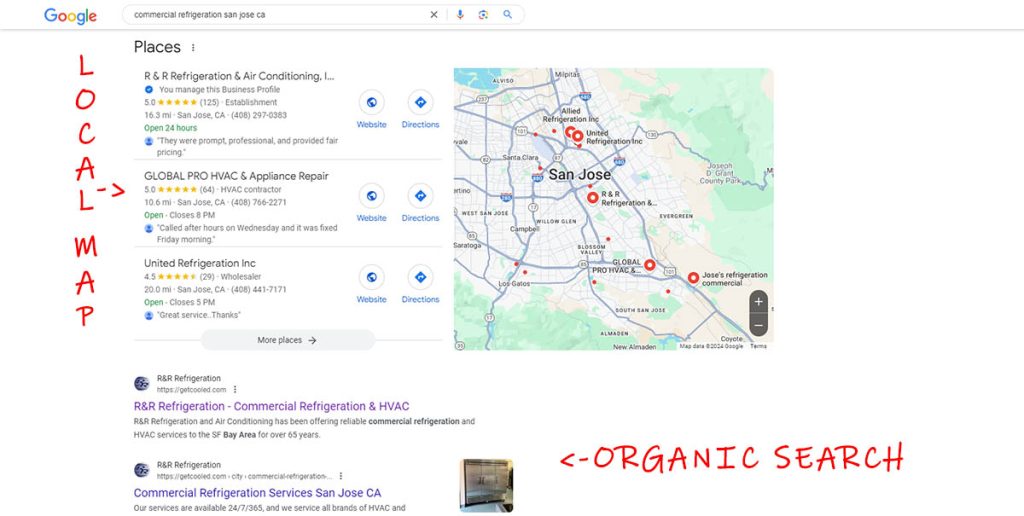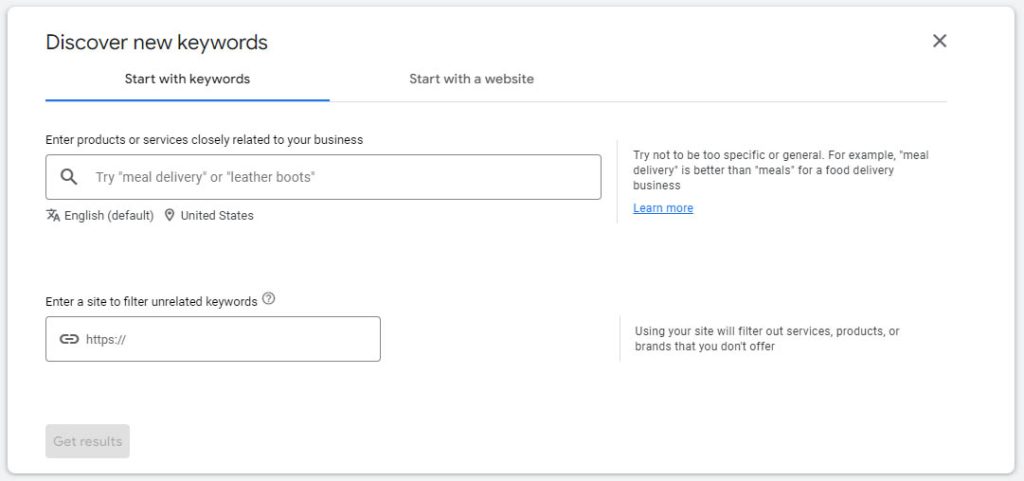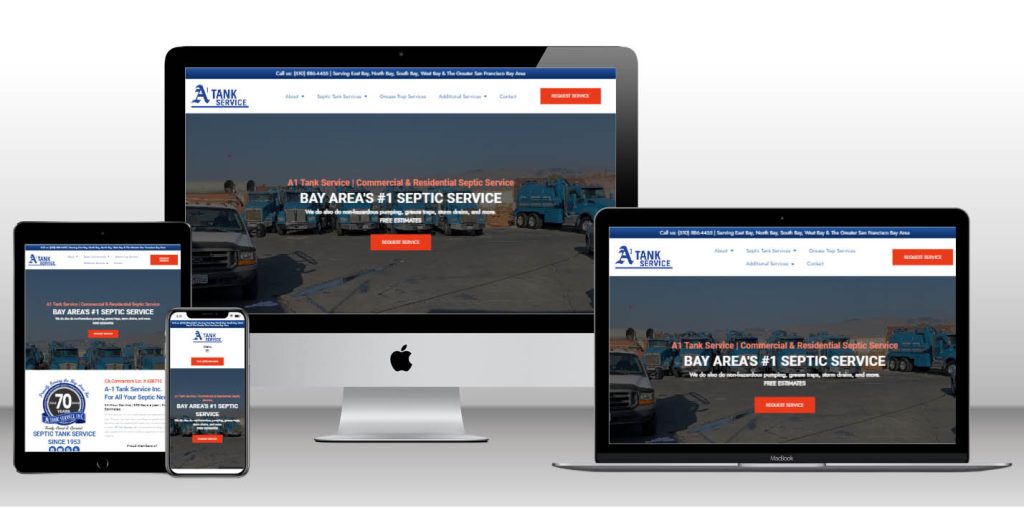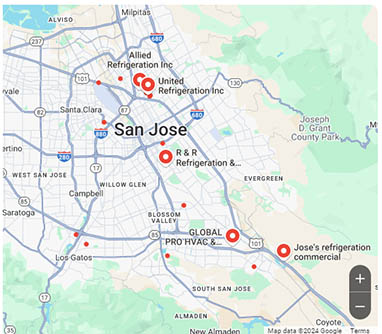Table of Contents

A Business Owner’s Guide to Local SEO Success
This is our no-nonsense guide to understanding Local SEO for any business owner who is curious about how they can rank higher in their local area or service area.
Local SEO Basics
What is Local SEO?
Local SEO focuses on optimizing your online presence to attract more business from relevant local searches. These searches happen on search engines like Google and Bing but also on maps, social media, and local directories.
Why Local SEO Matters
According to Google, nearly half of all searches have local intent, meaning customers are actively looking for products or services nearby. Ignoring local SEO means losing out on this essential traffic, which could lead directly to your business.
Google My Business Optimization
Step 1: Claim and Verify Your Google My Business Profile
To begin optimizing your local SEO, set up a Google My Business (GMB) account. Google My Business is a free tool that allows you to manage how your business appears on Google Search and Google Maps.
Steps to Optimize GMB:
- Complete Every Section: Fill out every detail, including business hours, services, and contact information. This helps Google understand your business better.
- Choose the Right Categories: Select relevant primary and secondary business categories that best match your services (e.g., “Plumber,” “Electrician,” or “Restaurant”).
- Add Photos: Upload high-quality photos of your business. According to Google, businesses with photos receive 42% more requests for directions.
- Regular Posts: Use GMB posts to promote offers, events, or blog content.
Tools to Use:
- Google My Business App: Manage your listing, respond to reviews, and monitor your performance.

Local Keyword Research
Step 2: Researching Local Keywords
Use keyword research tools to find terms your local customers are searching for. Incorporate the name of your city, neighborhood, or region in your keywords to increase relevance.
How to Find Local Keywords:
- Google Keyword Planner: Use this free tool to find search volumes for local terms.
- Moz Local: Another great tool to find local keyword opportunities, ensuring you target specific neighborhoods or nearby cities.
- Google Autocomplete: Start typing your services into Google and see the suggested searches. For example, “HVAC repair San Jose” might autofill to “best HVAC repair San Jose.”
Actionable Tips:
- Include variations like “near me,” “in [City Name],” and long-tail keywords like “best pizza place in downtown San Francisco.”

On-Page Local SEO Techniques
Step 3: Optimize Your Website Content for Local Search
Optimizing your web pages for local SEO requires focusing on specific elements that signal location relevance to search engines.
On-Page Elements to Focus On:
- Title Tags and Meta Descriptions: Use location-based keywords in your title tags (e.g., “Roof Repair in Campbell, CA | Call Today for a Free Quote”).
- H1 and H2 Headings: Make sure your main headings reflect your service area.
- Internal Linking: Link relevant local blog posts or service pages to each other to reinforce local relevance.
- Embed Maps: On your contact page, embed Google Maps of your location to help visitors find you more easily.
Actionable Tip:
Create location-specific service pages (e.g., “Plumbing Services in Sunnyvale, CA”) and optimize these pages with the right local keywords.
Local Link Building Strategies
Step 4: Building Local Authority with Links
Backlinks are one of the most important factors in local SEO rankings. The more high-quality local links you have, the more trustworthy your business appears to search engines.
How to Get Local Backlinks:
- Partner with Local Organizations: Get involved with local chambers of commerce or sponsor local events and get backlinks from their websites.
- Guest Blogging on Local Websites: Write guest posts for local bloggers or news outlets that mention your business and link back to your site.
- Participate in Local Directories: Get listed on reputable local directories like Yelp, Angie’s List, or industry-specific directories such as HomeAdvisor.
Tools to Use:
- Ahrefs: For analyzing your competitors’ backlinks and finding opportunities for your site.
- Moz Local: For managing local citations and backlinks from reputable sources.
Local Citations and NAP Consistency
Step 5: Manage Your Business Information (NAP Consistency)
Consistency across the web is critical for local SEO. NAP (Name, Address, Phone number) consistency helps Google verify your business information.
Actionable Steps:
- Ensure NAP Consistency: Keep your business details consistent across GMB, Yelp, Facebook, and other directories. This builds trust with both Google and users.
- Update Any Changes Promptly: If you move to a new location or change your phone number, update all your business listings immediately.
Tools to Use:
- Whitespark: For tracking and building local citations.
- Yext: To manage business listings across multiple platforms from a single dashboard.
- EZLocal: Create your NAP Schema Markup for Free with their free tool.
We also provide these services as part of our comprehensive digital marketing services. Our team understands the strategies for developing a strong online profile.
Mobile SEO for Local Businesses
Step 6: Optimize for Mobile Search
Mobile searches are a huge part of local SEO, with over 60% of searches done on mobile devices. Ensure your website is mobile-friendly to capture this traffic.
Mobile-Friendly Tips:
- Responsive Design: Ensure your website is fully responsive and adapts to different screen sizes.
- Mobile Page Speed: Use Google’s PageSpeed Insights to check your mobile site speed and fix any performance issues.
- Click-to-Call Buttons: Make it easy for mobile users to contact you by including clickable phone numbers.

Local Content Marketing Strategies
Step 7: Create Location-Specific Content
To strengthen your local SEO, create content that is relevant to your target area.
Content Ideas:
- Local Guides: Write blog posts that highlight local events, landmarks, or partnerships with local businesses.
- Case Studies: Share successful case studies with local clients, showcasing how your business solved their problems.
- Event-Based Content: Promote community events you’re sponsoring or participating in.
Reviews and Local SEO
Step 8: Encourage and Manage Customer Reviews
Positive reviews are a powerful signal for local SEO. Businesses with more (and better) reviews tend to rank higher in search results.
How to Get More Reviews:
- Ask for Reviews: Ask satisfied customers to leave reviews on Google, Yelp, or Facebook.
- Automate Requests: Use tools like BirdEye or Reputation.com to automatically request reviews from recent customers.
Actionable Tip:
Respond to all reviews (both positive and negative) to show that you value customer feedback.
Voice Search and Local SEO
Step 9: Optimize for Voice Search Queries
Voice search is growing in popularity, and many users are using it for local searches (“Where’s the nearest coffee shop?”).
Voice Search Optimization Tips:
- Use Conversational Keywords: Include long-tail, natural language keywords in your content (e.g., “How do I find the best sushi in Palo Alto?”).
- Create FAQ Pages: Answer common customer questions in your blog or service pages.
Google Maps SEO
Step 10: Rank Higher on Google Maps
Many users rely on Google Maps to find local businesses. Here’s how to improve your ranking:
Steps to Improve Google Maps Ranking:
- Verify Your Location: Make sure your business address is correctly displayed on Google My Business.
- Get Reviews: As mentioned earlier, reviews are critical for your Google Maps ranking.
Actionable Tip:
Include directions to your business from prominent landmarks in your city to improve relevance for map queries.
Schema Markup for Local SEO
Step 11: Use Schema Markup for Enhanced Listings
Schema markup is structured data that helps search engines understand your content and display additional details like business hours or reviews.
How to Implement Schema:
- LocalBusiness Schema: Add this code to your website to highlight your business name, address, and contact details.
- Use Google’s Structured Data Markup Helper: This free tool can help you generate the proper markup for your website.
Local SEO for Multi-Location Businesses
Step 12: Optimizing SEO for Multiple Locations
If your business operates in multiple areas, you need to optimize each location to rank well locally.
Tips for Multi-Location SEO:
- Create Unique Pages for Each Location: Each page should have unique content and be optimized for that specific city or region.
- Use Consistent NAP Information: Ensure that each location’s information is consistent across platforms.
Local SEO Tools and Software
Step 13: Tools to Help You Succeed
Several tools can help streamline your local SEO efforts.
Recommended Tools:
- BrightLocal: For managing local SEO performance.
- SEMrush: For tracking keywords and analyzing competitors.
- Moz Pro: For an all-in-one local SEO toolkit.
Competitor Analysis for Local SEO
Step 14: Analyze Your Competitors
Understanding how your competitors rank locally can help you improve your own strategy.
How to Perform a Competitor Analysis:
- Identify Top Competitors: Use tools like SpyFu or Ahrefs to find competitors in your local market.
- Analyze Their Strategies: Look at their content, keywords, and backlinks to find gaps and opportunities for improvement.
How Much Do You Need To Optimize for Local SEO?
In this guide, we covered many aspects of Local SEO, which can be overwhelming. The good news is that you really don’t have to be perfect in every dimension of Local SEO. The truth is you only have to be better than your competitors you’re looking to outrank. The level of Local SEO will be different for every industry and target service area. This can be a lot of work for you or very little, but one thing is consistent, you will have to put in the work to stay on top continuously.
If this sounds like it may not be in your wheelhouse of capabilities, or you just have more important tasks to do with your time – Solutionarian Marketing & Web Design is here to help you get your Local SEO on track and produce more business. Meet with us to talk with us about our strategy to help you rank higher locally.
Frequently Asked Questions
Local SEO is the process of optimizing your online presence to attract more business from relevant local searches. It’s important because it helps you rank higher in search results for customers looking for services in your area. With nearly half of all Google searches having local intent, optimizing for local SEO can help you drive more foot traffic, phone calls, and leads from people nearby.
To improve your Google My Business listing, ensure all information is accurate and complete. This includes your business name, address, phone number (NAP), hours, and services. Add relevant keywords to your description, upload high-quality images, and regularly update posts. Getting more positive reviews and responding to them also helps increase your local rankings.
There are several tools available for tracking and improving your Local SEO performance. Some of the top tools include Google My Business Insights for monitoring search performance, BrightLocal and Moz Local for tracking local citations and rankings, and SEMrush for competitor analysis and keyword research.
To build local backlinks, consider partnering with local businesses, sponsoring community events, or getting involved with local organizations. Additionally, contribute guest blog posts to local websites, news outlets, or business directories. Make sure to get listed in reputable directories like Yelp, Angie’s List, or other industry-specific platforms to boost your local authority.
These FAQs provide valuable information and practical steps for users looking to enhance their Local SEO, while also aligning with common search queries related to improving local online visibility.
Are you ready to get your Local SEO advantage? We are ready to show you a clear path to getting more business from a stronger online presence.
SEO Resources

It’s time to climb the ranks with SEO Marketing.
Get started ranking higher on Google and Bing Search Engines.
SEO Services for Local Areas
- Santa Clara SEO Services
- San Jose SEO Services
- Campbell SEO Services
- Milpitas SEO Services
- Palo Alto SEO Services
- Sunnyvale SEO Services
- Los Gatos SEO Services
- Cupertino SEO Services
- Saratoga SEO Services
- Mountain View SEO Services
- Morgan Hill SEO Services
- Gilroy SEO Services
- Los Altos SEO Services
- Stanford SEO Services
- Oakland SEO Services
- Fremont SEO Services
- Hayward SEO Services
- Berkeley SEO Services
- San Leandro SEO Services
- Pleasanton SEO Services
- Alameda SEO Services
- Union City SEO Services
- Castro Valley SEO Services
- Dublin SEO Services
- Newark SEO Services
- San Lorenzo SEO Services
- Daly City SEO Services
- San Mateo SEO Services
- Redwood City SEO Services
- S. San Francisco SEO Services
- San Bruno SEO Services
- Pacifica SEO Services
- Menlo Park SEO Services
- Foster City SEO Services
- Burlingame SEO Services
- San Carlos SEO Services
- East Palo Alto SEO Services
- Belmont SEO Services
- Millbrae SEO Services
- Hollister SEO Services
